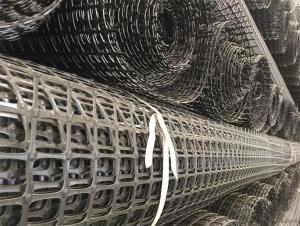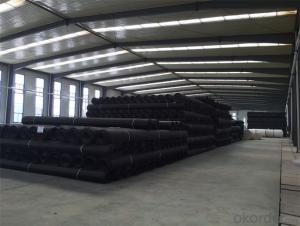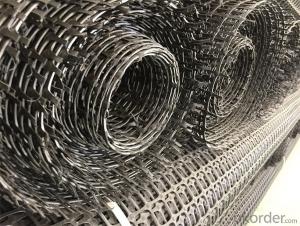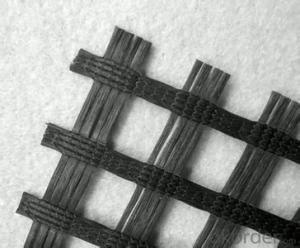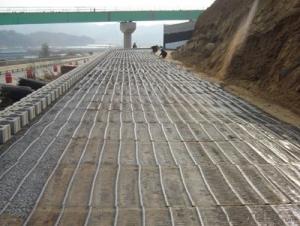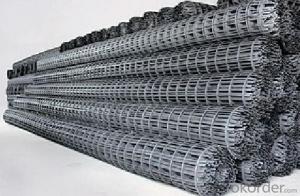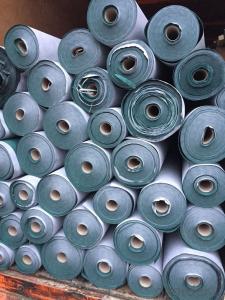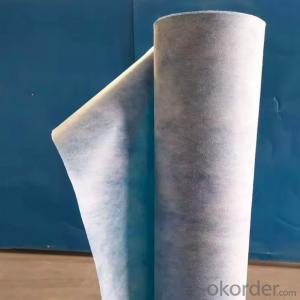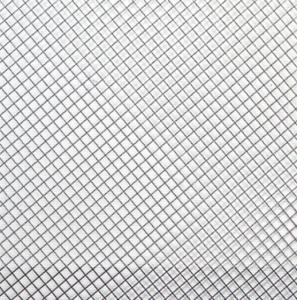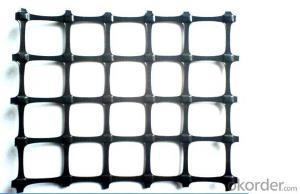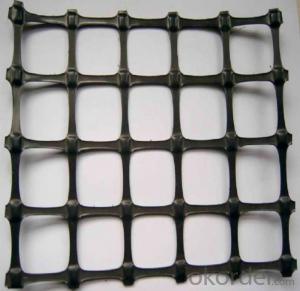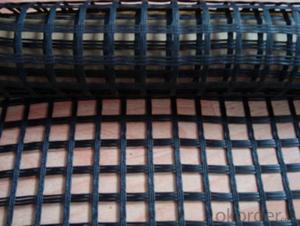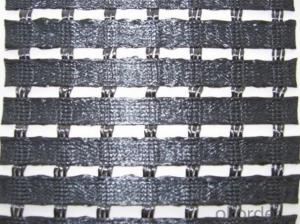Uniaxial Geogrid with High Tensile Strength Suitable for Different Market
- Loading Port:
- Tianjin
- Payment Terms:
- TT OR LC
- Min Order Qty:
- 20000 m²
- Supply Capability:
- 50000000 m²/month
OKorder Service Pledge
OKorder Financial Service
You Might Also Like
Fiberglass Geogrid Introduction:
Fiberglass geogrid is a kind of planar mesh material using alkali-free fiberglass yarn as base body and then coated with high quality modified asphalt. It is warp knitted with oriental structure which gives full play of yarn strength and improves its mechanical property to make the product high tensile, tearing and creep-resistant. Moreover, the composite property of coating with asphalt makes full protection of the fiberglass matrix and greatly improves its wear and shear resistance. All the advantageous functions make the product have a good performance in pavement strengthening, track cracking and solving difficulties of strengthening the bituminous pavement.
Fiberglass Geogrid Features:
1. Light weight, high tensile strength, high modulus, low elongation and good toughness.
2. Corrosion resistance, no long-term creep, long life span.
3. Good physical and chemical stability and good thermal stability.
4. Resistant to fatigue cracking, high-temperature track and low temperature shrinkage cracking.
5. Delaying and decreasing crack reflection.
Specifications | PET20-20 | PET30-30 | PET40-40 | PET50-50 | PET80-80 | PET100-100 | PET120-120 |
Elongation(%) | 10%~15% | ||||||
Vert Tensile strength(KN/m) | 20 | 30 | 40 | 50 | 80 | 100 | 120 |
Horiz Tensile strength(KN/m) | 20 | 30 | 40 | 50 | 80 | 100 | 120 |
Grid(mm) | 12.5×12.5 20×20 24.5×24.5 | ||||||
Width(m) | 1—6 | ||||||
Fiberglass Geogrid Application:
1. Road surface asphalt overlay construction engineering; Asphalt layers
reinforcement.
2. Converting old cement concrete road into composite road; Restraining
reflection cracking caused by block shrinkage.
3. Road extension; Preventing and controlling the cracking caused by new
and old combination and uneven settlement.
4. Treatment of the conjunction between tunnel and bridge or foundation.
Packaging & Shipping:

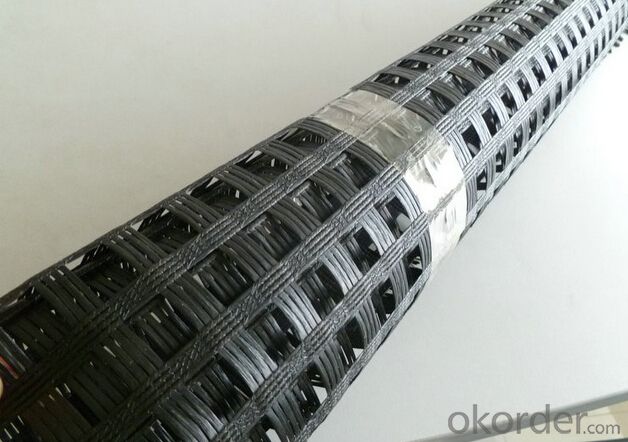
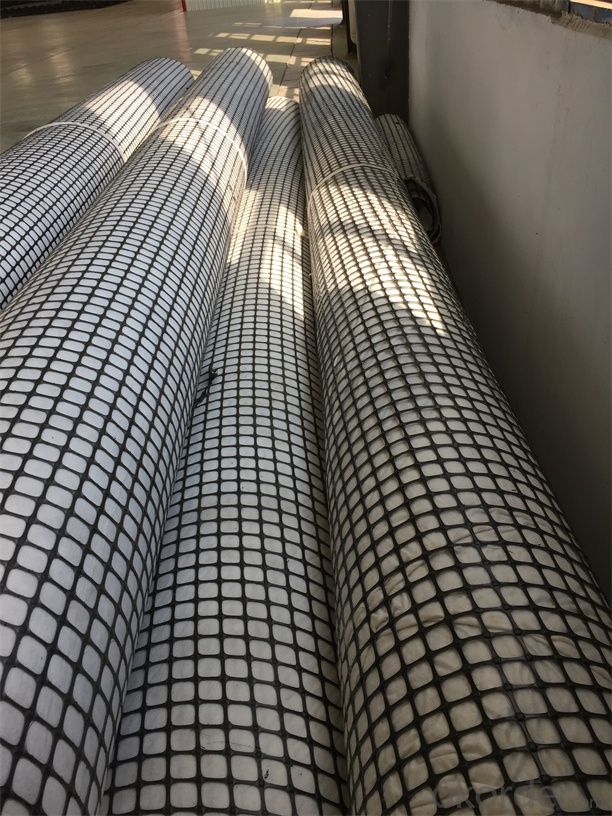
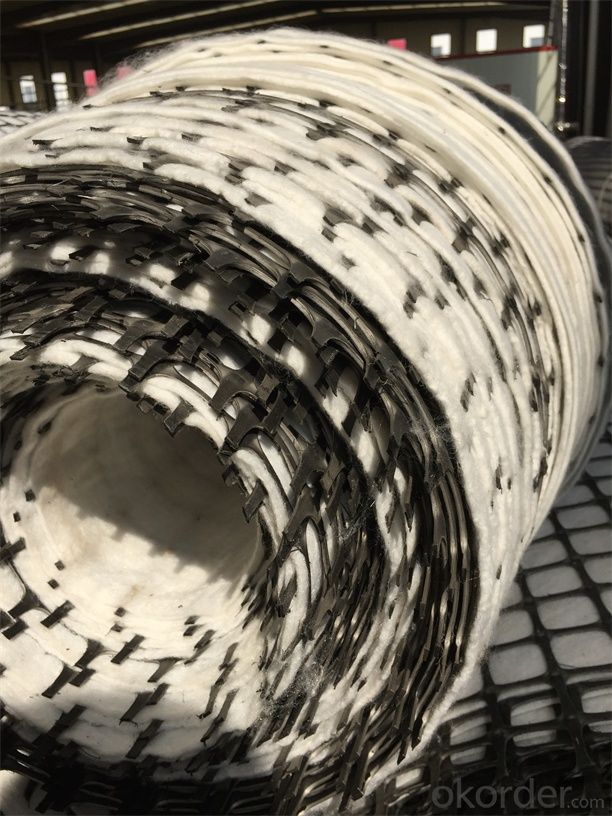

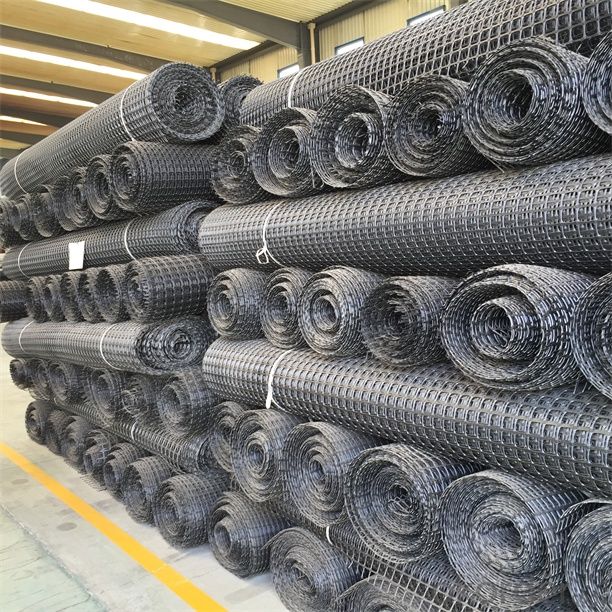
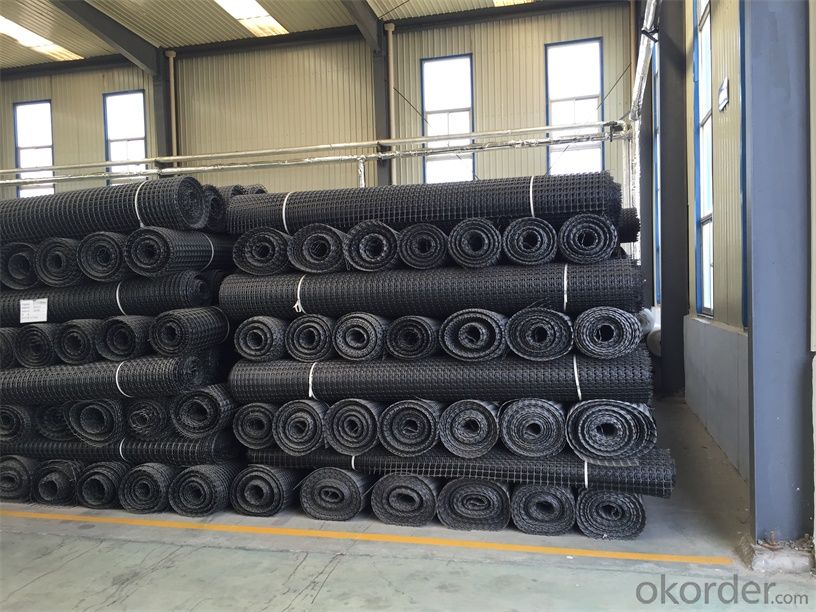


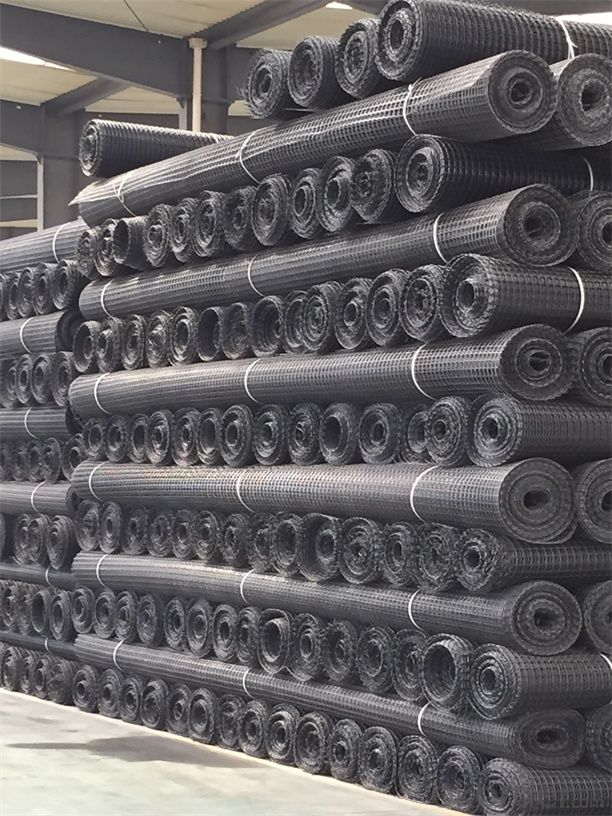
FAQ:
1. How to order your geogrid ?
a) Tensile strength in warp & weft direction
b) Grid size
c) Roll Width and length
d) Quantity
2. What is the Payment term?
a) TT
b) LC AT SIGHT
c) cash
d) 30% contact value as deposit ,the blance 70% be paid after received the copy of bl .
3. Delivery time
a) 19-25 days after received your depsit .
4. What is MQQ ?
a) 2500 m2 as MQQ , we can also produce sample for you .
Welcome to send your inquiry to us, and if you have any question, we can also help you.
- Q:How are geogrids used in civil engineering?
- Geogrids are extensively used in civil engineering for reinforcing soil structures, such as retaining walls, slopes, and pavements. These geosynthetic materials provide increased stability and load-bearing capacity to the soil, preventing erosion and improving overall structural integrity. They are typically incorporated into the soil layers during construction, acting as a reinforcement to distribute the loads more effectively and reduce potential settlement or failure.
- Q:How do geogrids improve the performance of geosynthetic-reinforced slopes in liquefaction-prone areas?
- Geogrids improve the performance of geosynthetic-reinforced slopes in liquefaction-prone areas by providing additional stability and reinforcement to the soil. They function by distributing and transferring the load across a wider area, reducing the potential for soil liquefaction. Additionally, geogrids increase the shear strength of the soil, preventing slope failure and enhancing the overall stability of the structure.
- Q:How do geogrids improve the performance of geosynthetic-reinforced walls?
- Geogrids improve the performance of geosynthetic-reinforced walls by providing tensile strength and stability to the soil structure. They act as a reinforcement material, enhancing the overall strength and load-bearing capacity of the wall. Geogrids also help to distribute the applied loads more evenly, reducing the potential for wall deformation or failure. Additionally, they prevent soil erosion and provide long-term durability to the wall system, making it more resistant to environmental factors and extending its lifespan.
- Q:Geogrid prices and geogrid manufacturers?
- 4, geogrid reinforced airport foundation can greatly improve the bearing capacity of the runway, to ensure the safety of aircraft landing5, geogrid can be used for garbage disposal, power plants, ash dam project, coal mine, metallurgy, green, enclosure and other fields6, the construction of soft foundation reinforcement, improve the overall bearing capacity of the foundation
- Q:Is there a geogrid in the transition section of Railway
- The railway section is to be used in the geogrid
- Q:Can geogrids be used for reinforcement in asphalt overlays?
- Yes, geogrids can be used for reinforcement in asphalt overlays. Geogrids are commonly used in pavement applications to enhance the structural integrity of asphalt overlays by reducing cracking and improving overall pavement performance.
- Q:Can geogrids be used in slope stabilization for railway cuttings?
- Yes, geogrids can be used in slope stabilization for railway cuttings. Geogrids are engineered materials that can reinforce soil and provide stability to slopes. By incorporating geogrids into the slope, they help distribute and minimize the forces acting on the soil, reducing the risk of slope failures and erosion. This makes geogrids a suitable solution for stabilizing railway cuttings and ensuring safe and reliable railway operations.
- Q:What is the difference between a woven and a non-woven geogrid?
- A woven geogrid is made from weaving durable synthetic fibers together, creating a strong and flexible grid structure. On the other hand, a non-woven geogrid is formed by bonding synthetic fibers together using heat and pressure, resulting in a uniform and stable matrix. Overall, the key difference lies in the manufacturing process and structure, with woven geogrids offering higher tensile strength and stability, while non-woven geogrids provide better filtration and drainage properties.
- Q:Are geogrids suitable for use in ground reinforcement for residential developments?
- Yes, geogrids are suitable for use in ground reinforcement for residential developments. They provide excellent soil stabilization and reinforcement, helping to prevent soil erosion, improve load-bearing capacity, and enhance the longevity of residential structures. Geogrids are a cost-effective and sustainable solution for various ground reinforcement applications, making them a suitable choice for residential developments.
- Q:What is the effect of creep on geogrid performance?
- Creep can have a significant impact on the performance of geogrids. Over time, the constant stress and strain on the geogrid can cause it to slowly deform and lose its original shape and strength. This can result in reduced load-bearing capacity and overall effectiveness of the geogrid in reinforcing and stabilizing the soil. It is important to consider creep behavior when designing and selecting geogrids for long-term applications to ensure their durability and performance.
1. Manufacturer Overview |
|
|---|---|
| Location | |
| Year Established | |
| Annual Output Value | |
| Main Markets | |
| Company Certifications | |
2. Manufacturer Certificates |
|
|---|---|
| a) Certification Name | |
| Range | |
| Reference | |
| Validity Period | |
3. Manufacturer Capability |
|
|---|---|
| a)Trade Capacity | |
| Nearest Port | |
| Export Percentage | |
| No.of Employees in Trade Department | |
| Language Spoken: | |
| b)Factory Information | |
| Factory Size: | |
| No. of Production Lines | |
| Contract Manufacturing | |
| Product Price Range | |
Send your message to us
Uniaxial Geogrid with High Tensile Strength Suitable for Different Market
- Loading Port:
- Tianjin
- Payment Terms:
- TT OR LC
- Min Order Qty:
- 20000 m²
- Supply Capability:
- 50000000 m²/month
OKorder Service Pledge
OKorder Financial Service
Similar products
New products
Hot products
Hot Searches
Related keywords


